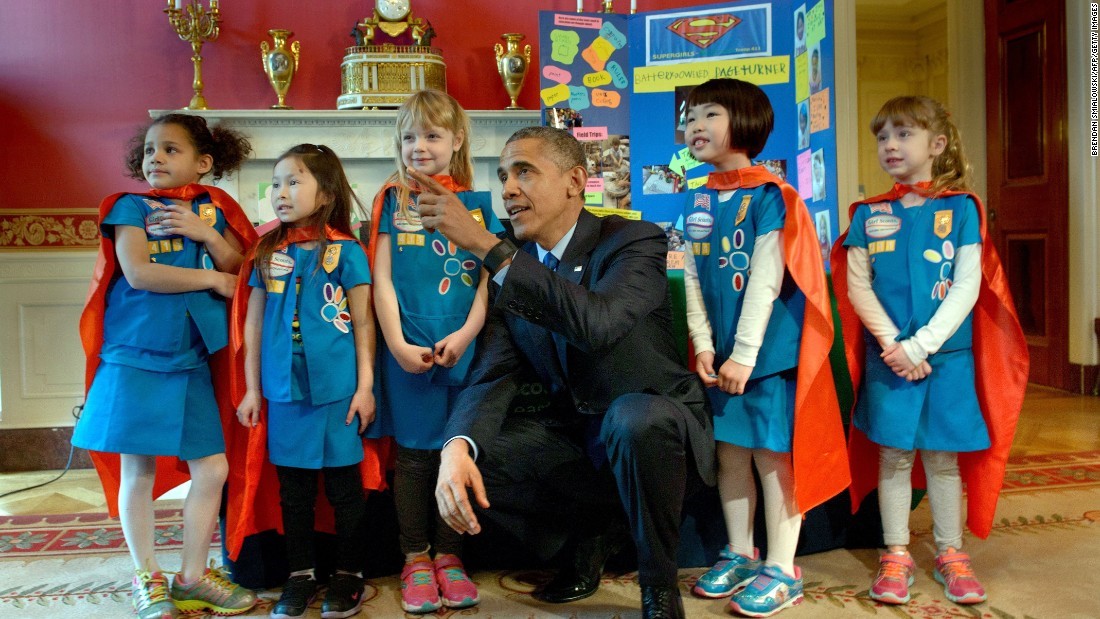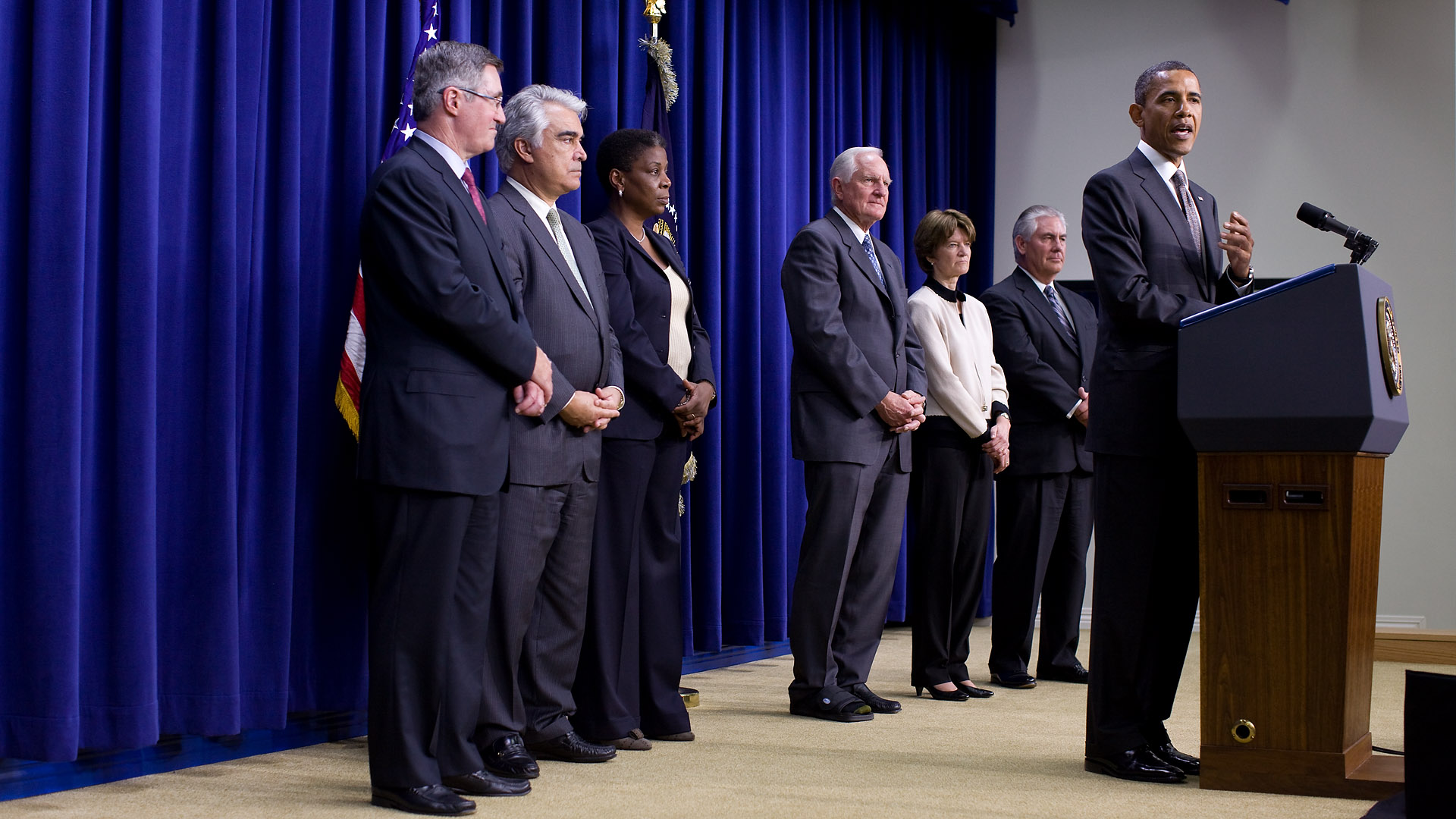April 2018: International College of Technology Opens in Hakusan-shi, Ishikawa
The International College of Technology (ICT) is a science and engineering liberal arts boarding school that is due to open on April of 2018, in Hakusan-shi of Ishikawa prefecture.
May 20th (Sat) was their kick off event at the Kanazawa Institute of Technology (KIT), Toranomon campus.
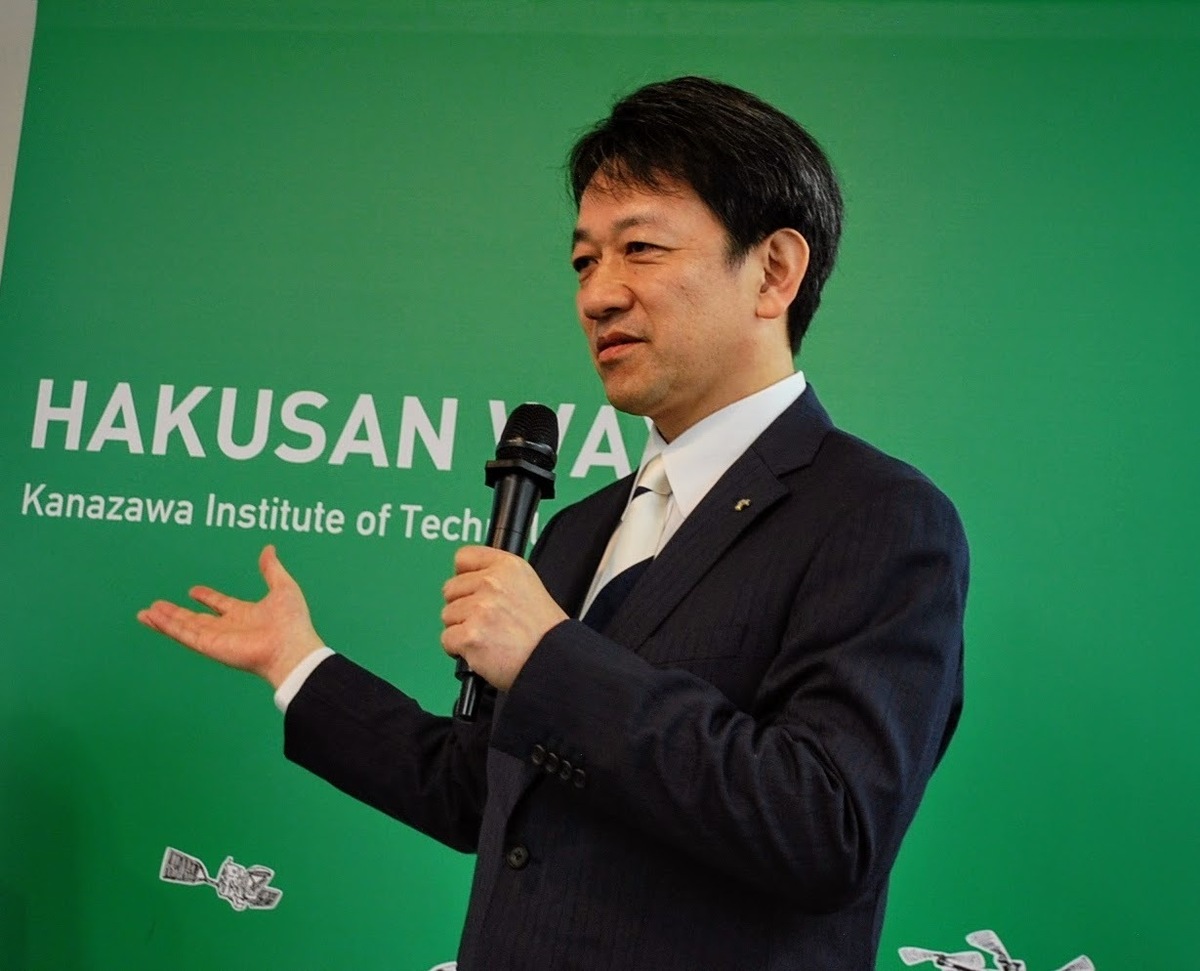
President Osawa of KIT.
President Osawa introduced us to Mr. Lewis Barksdale (currently the principal of Kanazawa Technical College), who will take position as the principal of ICT.
The event coordinator of Roots & Wings representative, Ms. Kaoru Nakahara, gave a speech on how the Japanese lack in enthusiasm and drive when it comes to communication.
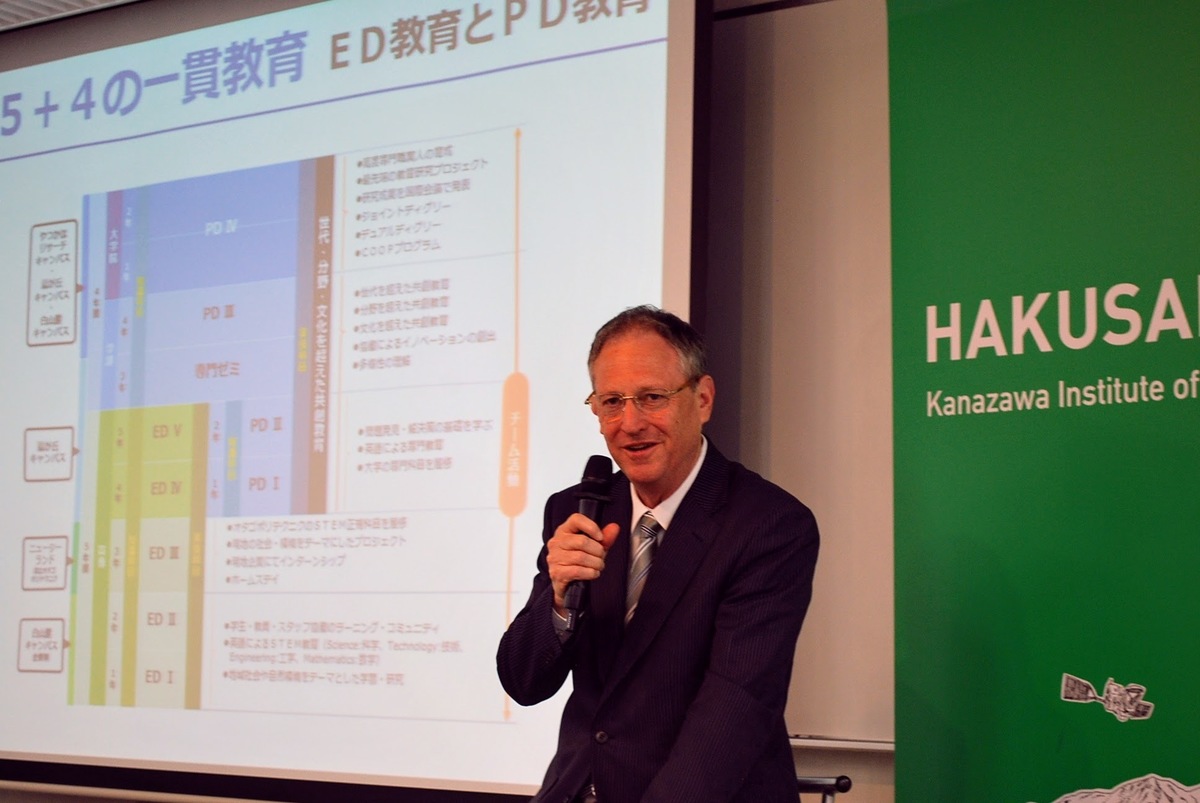
Principal Lewis Barksdale
STEM Education Across the World and the Fourth Education Reform
As former US president Obama mentioned “being a nerd is one of the best ways to serve your country” in his last speech, Ms. Nakahara explains about the current situation of the STEM education across the world.

Event coordinator Roots & Wings representitive Ms. Kaoru Nakahara
We were able to see Ms. Nakahara comment on what Japanese people should do to improve their communication skills in order to avoid becoming the Wallflower at social gatherings.
"STEM for All" President Obama and participants at the White House science fair
Image obtained from the White House
Ms. Nakahara moves on to explain the STEM education worldwide.
Since 2016, the STEM program has been mandatory among children from ages 8 to 13 in Finland, as well as children from age 5 in England, along with programming courses.
Major IT firms such as Google, Microsoft and Intel are also locating labs.
STEM education is also getting implemented into armies.
▼An Instagram post about a book fair in Singapore. Devices are used to check out books.
Ms. Nakahara specifically focused on Singapore’s science education.
After becoming an independent nation in 1965, Singapore has been putting a lot of effort into improving their science education.
People gasped in surprise when Ms. Nakahara points out that the “budget of 19% roughly equals their national defense expenditure.”
She lectured on ICT's "STEM education in English" by giving various examples from different countries.
Symposium
President Osawa and Principal Barksdale took turns answering Ms. Nakahara's questions on the theme of "changing education" during the discussion panel.
"How much English does a student need to know in order to study at ICT?" asks Ms. Nakahara.
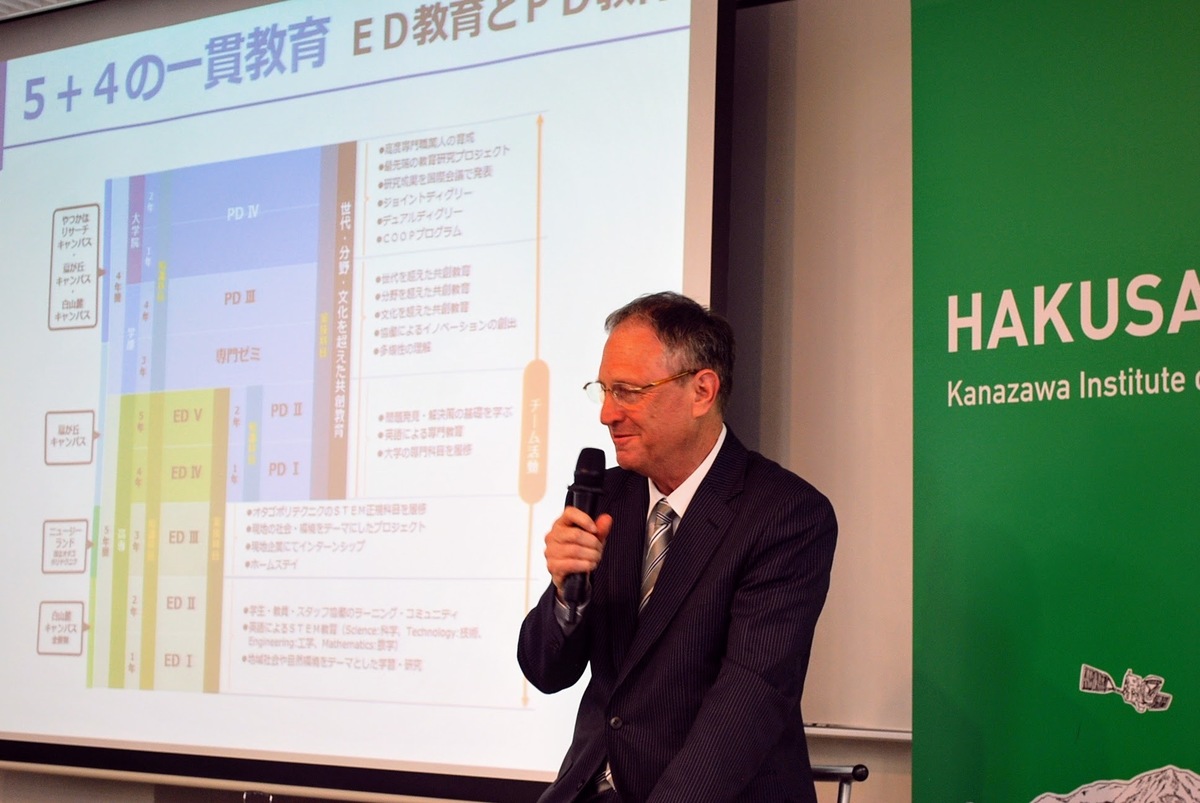
Principal Barksdale explaining about ICT
The principal explains that a student is not required to have superb English skills to be accepted into the school.
Studying subjects like engineering, science and math in English will encourage students and staff to develop their English communication skills together.
Additionally, 3rd year students will have the opportunity to study abroad in New Zealand and immerse themselves in a complete English environment.
He points out that ICT is a boarding school, and differentiates themselves from international schools which are designed for foreign students. ICT hopes to have local students learn among international students.
The 50 Year Long History of STEM Education
President Osawa explains that two-way communication is an important aspect when learning English.
For this reason, the foundation of an active learning environment requires a high involvement in communication for both the teachers and the students.

Students will start gaining full experience of the English STEM education from age 15, and Principal Barksdale hopes to start gathering students and teachers from overseas.
Architecture student utilizing the historical environment of Kanazawa for a field research, otherwise not possible.
More collaboration between ICT and KIT will be present at the Hakusanroku campus.
(Photo: Obtained from KIT Facebook)
In order the gather talents from overseas, ICT is looking forward to accept returnees and international students, not limited to native English speakers. He stressed the importance of being able to study together inside a community which respects diversity and different cultures.
By studying at school with others who have different opinions and thoughts, students will be able to clarify their own thoughts and discover their true identity, which will allow them to acquire the ability to communicate globally.
Joining the CDIO
President Osawa explains the reason behind joining the CDIO proposed by the Massachusetts Institute of Technology and 3 other universities from Sweden.
"Why study under the CDIO" The Massachusetts Institute of Technology explains in their website toward prospective and current students.
CDIO stands for conceive, design, implement, and operate. While "C" and "D" can both be done inside a classroom, "I" and "O" requires attention at the implementation level.
"I" and "O" is important because that is where actual work is done, which will involve trial and error.
Individuals must come up with with a logical and specific solution to their problems, and getting a hands on experience is the best way to identify the problem.
Along with this explanation, President Osawa also insisted that it is possible to collaborate with local government and firms to experiment with their products and technology.
▼Along with MIT, Sweden's Chalmers University of Technology uses the CDIO as their framework. (Obtained from Instagram)
An International Cooperation
Principal Barksdale explains that instead of identifying and solving a problem on your own like Thomas Edison, it is crucial for engineers today to build teams and cooperate with one another. Hence why liberal arts are so important.
ICT's key characteristic is that the environment for demonstrative work is integrated in both the undergraduate and graduate school, says president Osawa.
15 year old students, engineers, researchers, undergraduate and graduate students will be able to learn about engineering design together, and experience the full CDIO.
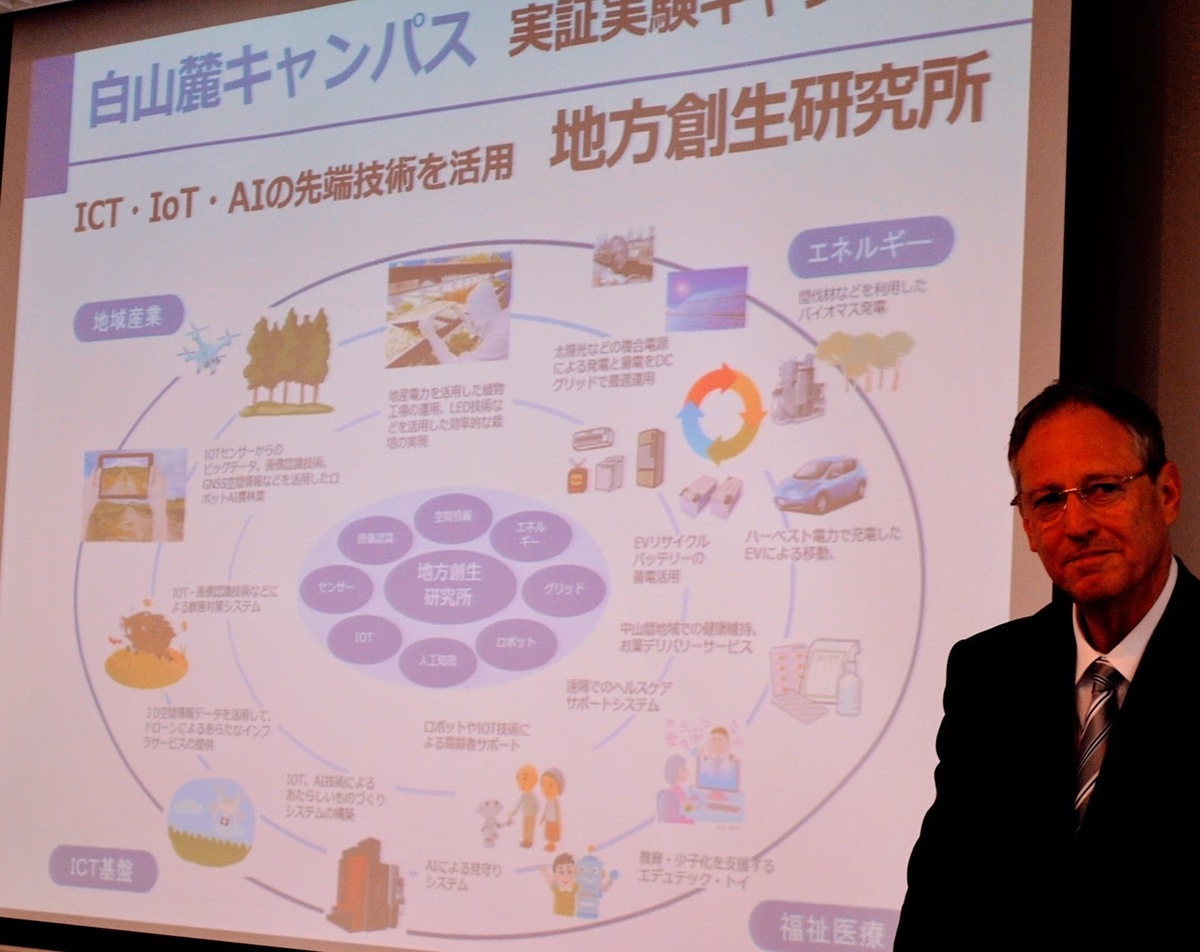
About the Hakusanroku Campus and demonstration experiments
Company CEOs, engineers and end users come together at the Hakusanroku campus and discuss various topics that arise. The process from identifying a problem to solving it is an important aspect in this collaboration.
The Acceleration of Technological Advancement
When asked by Ms. Nakahara "Can a non-science student enroll?" Principal Barksdale answers that it is important to take an approach from the end user's view, and that one must be equipped with an "ability to master" new technology.
One must also have curiosity and strive for technology rather than being content with his or her achievements so far, which may be the main reason behind former President Obama’s pursuit for STEM education.
Former President Obama's interview session at the White House about STEM education.
(Obtained from White House)
Could Galileo and Newton be the Founder of STEM Education?
President Osawa insists that written works left by Galileo and Lilienthal, which is part of a book collection at KIT, has the principal of STEM education.
The method of flying suggested by Lilienthal has been applied to the current drone technology, but his illustration of using a bird’s wings has not been practiced yet.
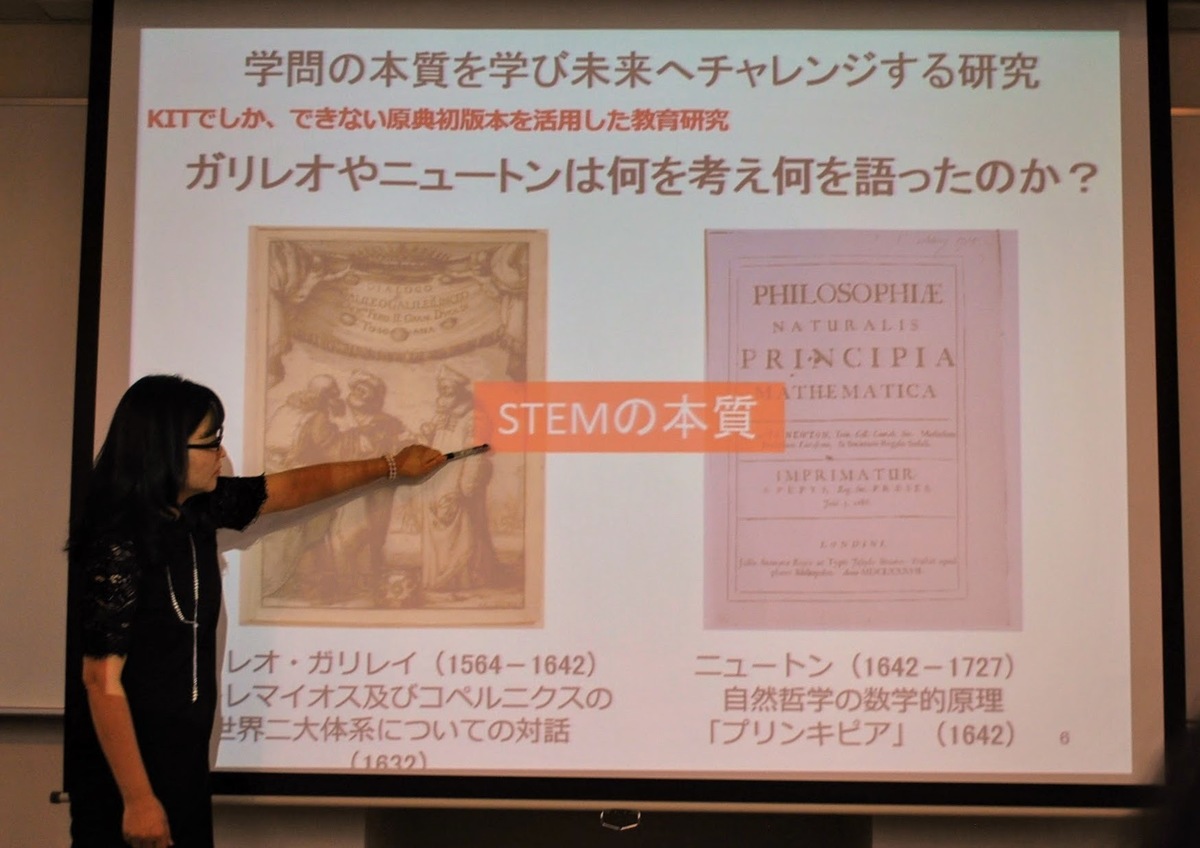
Ms. Nakahara on Galileo and Newton's slide
Lilienthal's has left in his work timeless mathematics and engineering, which may be where the foundation lies.
At ICT, it is possible to learn the essence of STEM education at the Hakusanroku campus with KIT.
Students will have the chance to approach aeronautical engineering by first examining different birds of Africa and South America with diverse international students and returnees.
This is where the first "discussion" will arise, and being able to communicate and discuss in English will become an important skill.
Q&A Session
During the Q&A session, the guardians were interested to know the ratio of students and teachers, and how they are going to gather students from overseas.
There will be 90 students per grade (2 classes of 45 students), and workshops will consist of fewer students. Project based lessons will have about 4 to 5 students per group.
Starting with Singapore, the focus of international recruitment will be on Asia, and they will take their first step by providing explanations of ICT to local schools.
Future Panel Discussions
The themes for future talk sessions have been decided. Themes such as "Design thinking" and "Innovation" are a must-see for households with children.
2nd Session August 5th (Sat) "Design Thinking"
3rd Session October 28th (Sat) "Global Leader"
4th Session December 9th (Sat) "Innovation"
Contact
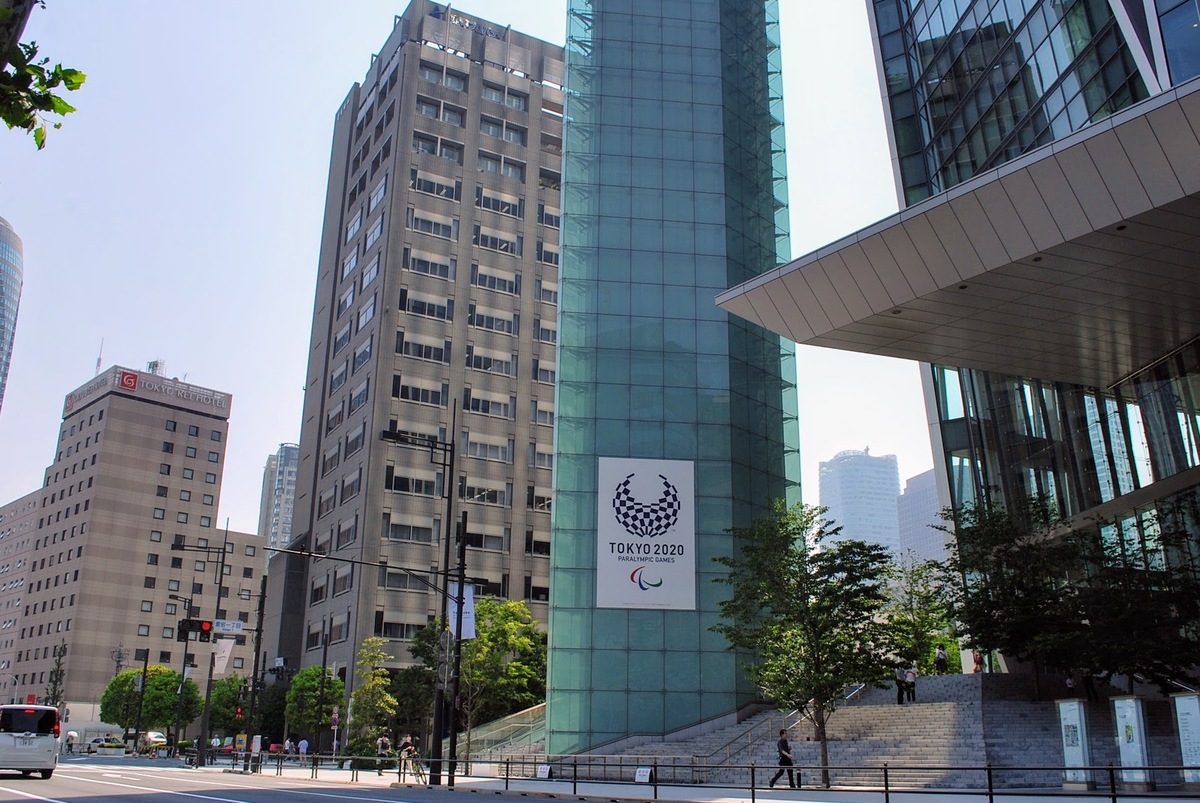
Kanazawa Institute of Technology, Toranomon Campus.
INTERNATIONAL COLLEGE OF TECHNOLOGY.
URL:http://www.kanazawa-tc.ac.jp/ict/
TEL:076-248-9840
Mail:[email protected]
Kanazawa Institute of Technology Tokyo Toranomon Campus
Atago Toyo Bldg. 12F
1-3-4 Atago, Minato-ku, Tokyo
105-0002
URL:http://www.kanazawa-it.ac.jp/tokyo/english/index.html
TEL:03-5777-2243
FAX:03-5777-2226

